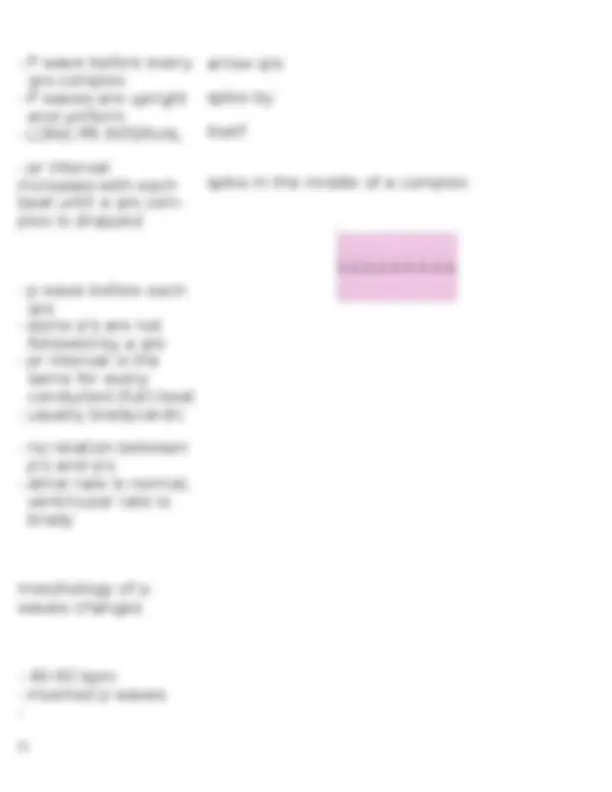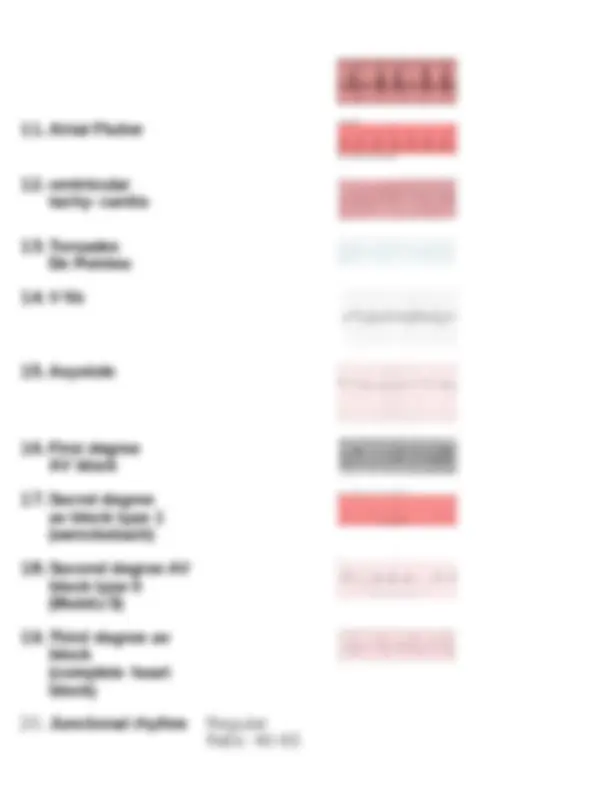





Study with the several resources on Docsity

Earn points by helping other students or get them with a premium plan


Prepare for your exams
Study with the several resources on Docsity

Earn points to download
Earn points by helping other students or get them with a premium plan
Community
Ask the community for help and clear up your study doubts
Discover the best universities in your country according to Docsity users
Free resources
Download our free guides on studying techniques, anxiety management strategies, and thesis advice from Docsity tutors
A comprehensive review of various cardiac dysrhythmias, including their characteristics, diagnostic features, and management. It covers topics such as first-degree av block, second-degree av block (wenckebach and mobitz ii), third-degree av block, wandering pacemaker, junctional rhythms, failure to capture, failure to sense, normal sinus rhythm, atrial fibrillation, atrial flutter, ventricular tachycardia, torsades de pointes, ventricular fibrillation, asystole, and paced rhythms. Designed to help students prepare for the 2024 final exam in a dysrhythmia-related course, providing them with a thorough understanding of the subject matter and the ability to identify and interpret different cardiac rhythms. The review questions and answers are graded at the highest level, ensuring that students have the knowledge and skills necessary to pass the exam with flying colors.
Typology: Exams
1 / 6

This page cannot be seen from the preview
Don't miss anything!




Administrator [Date] [Course title]
1. First Degree AV Block **Characteris- tics
11.Atrial Flutter 12.ventricular tachy- cardia 13.Torsades De Pointes 14.V fib 15.Asystole 16.First degree AV block 17.Secnd degree av block type 1 (wenckebach) 18.Second degree AV block type II (Mobitz II) 19.Third degree av block (complete heart block)
P Wave: ABSENT or INVERTED